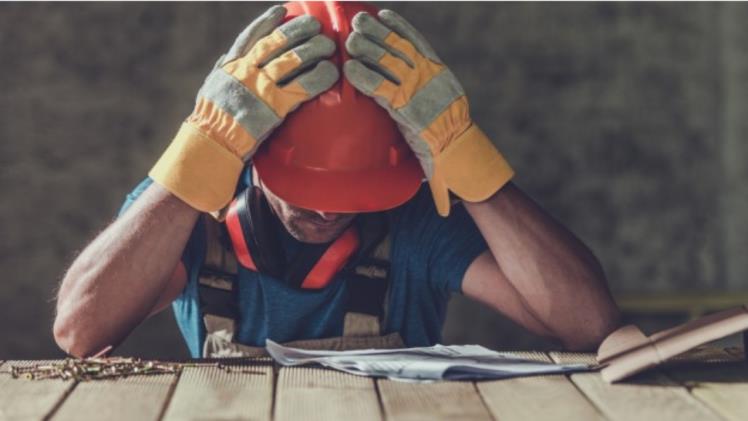The world has recently realized the importance of mental health. It cannot be stressed enough how important mental health is. Even more than physical health. If a person is struggling mentally, they are unable to carry out daily life tasks, direct focus, suffer from emotional distress, and are socially isolated.
As an organization, it is necessary that you take measures to ensure the mental health of workers. If you don’t, you will be up a tree, as poor mental health can profusely affect your worker’s performance.
- According to recent reports, 83% of workers suffer from stress in the US,l.
- 25% of workers regard their workplace as a stressor.
- You will be shocked to know that nearly one million workers skip work due to stress every day.
A study conducted on 239 firms in China concluded that the mental health of employees positively impacts their work performance when it is mediated by innovative behavior and work engagement.
OSHA has got you covered. Other than physical safety, it ensures the positive and well-balanced mental health of your employees. This article highlights how OSHA promotes a stress-free working environment for your employees and the importance of signing up for an OSHA learning online courses.
Stressors at Construction Sites:
Workers who work at construction sites are most likely to suffer from the following stresses:
- Heat Stress:
Construction workers work under extreme weather conditions. They have to work in humidity and excessive heat, which causes heat stress as their bodies fail to control the internal temperature. Heat stress can also result in serious health conditions like dehydration and increased heart rate.
The OSHA 10-Hour and OSHA 30-Hour construction online training programs protect your employees against heat stress by providing personal protective equipment (PPE). Employees are also trained to identify hazardous environmental conditions so they can cease work and avoid potentially stressful situations. For construction workers in New York, OSHA 30 NYC online courses are available to ensure they have the knowledge and skills to work safely in a challenging urban environment.
- Safety-related stress:
Safety is a concern of all the workers. As an employer, you must be concerned about the safety of your workers, too. If employees don’t feel safe and secure in the work setting, they will be stressed.
OSHA training programs train your employees to practice safety guidelines and avoid accidents. These courses will give them confidence to deal with emergencies, which will consequently improve their performance.
World Health Organisation (WHO) Criteria:
OSHA follows the guidelines set by the World Health Organization to foster a stress-free working environment. Let’s delve into how OSHA promotes a healthy work culture by adhering to WHO criteria.
- Identify challenges at worksites:
Working at construction sites is a tiring and demanding job. Long working hours, exertion, and environmental conditions can take a toll on the mental health of workers. Grief is also a major factor contributing to the stress of the workers, as witnessing fatal injuries to their colleagues can be a stressful experience. OSHA 10 Hour and 30 Hour course meticulously explains how to maintain a healthy work-life balance and avoid injuries.
- Closely monitor substance-related behaviors:
According to poll results, 22.5% of workers accepted taking drugs and alcohol during working hours.
Workers who consume drugs at work find it even more challenging to cope with their job demands. OSHA training programs educate your employees on how to avoid indulging in substance-related behavior at work for maximum safety and performance.
- Practice sensitivity:
OSHA courses provide training to employers as well to make sure they contribute to making their firm a stress-free one. They are directed to practice sensitivity with their employees and show consideration. If they observe changes in the behavior of their employees, instead of lashing out, they should have a word with them to figure out what’s disturbing them.
- Feasibility of resources:
To support mental health, employers should hire licensed workplace counselors. They will effectively identify stressors and eliminate them from your workplace environment. Workplace counselors will provide tailored guidance to each one of your employees and help them manage their workload and stress.
Employees who experience traumatic experiences at construction sites, such as a death in the employee community, can also seek help from these counselors and recover from their trauma.
Wellness coaches can assist in maintaining both the physical and psychological health of your employees.
Construction suicide prevention:
According to the findings of the survey conducted in January 2022, there are almost 5,500 suicides per year in the construction industry, which is the second highest in the United States.
Studies suggest that reasons for such a high suicide rate among construction workers are fatigue, anxiety, stress, and underlying risk factors such as undiagnosed depression and other mental illnesses.
As we mentioned above, substance use is a common practice among construction workers. This malpractice is also a contributing factor to the increased suicide attempts of workers.
Every year in September, OSHA conducts an awareness campaign known as Suicide Prevention Week. The endeavor is to highlight the challenges workers face that lead to suicidal tendencies. Through this campaign, they are also taught how to face these challenges by employing stress management techniques.
Resources OSHA offers to ensure mental health:
Checklists:
Osha provides two types of checklists. They are as follows:
- Check for Senior Managers:
Seniors are the mentors and managers in every industry. They guide their juniors and contribute to the success of your company. With this guide, OSHA educates the senior leaders on how to be supportive and empathetic towards people working under them. Transparency and a culture of connection are promoted.
- Checklist for Supervisors:
The goals of the supervisor’s checklist are the same as the senior manager’s checklist. However, a supervisor guides, monitors, and supports the overall work environment. Therefore, this checklist ensures that supervisors look for strategies to eliminate stress and identify the symptoms of distress.
By following the recommendations in these checklists, both Senior Managers and Supervisors can foster a stress-free working environment for employees.
Myth Buster Fact Sheet:
With this fact sheet, supervisors and the HR department address emotions and feelings that employees think are unusual and abnormal to experience.
For example, most people believe acknowledging stress will make them look weak. This fact sheet presents contradictory evidence to normalize experiencing stress. This type of information will also act as a driving force for stressed workers when they realize they are not the only ones experiencing stress.
Annual Campaigns:
OSHA conducts different campaigns throughout the year to address specific topics related to mental health. They are as listed below:
- National Prevention Week
- Mental Health Awareness Month
- Suicide Prevention Month
- List of Awareness Events
- Mental Health Awareness Charity Walks and Runs
Conclusion:
OSHA is determined to make your employees and workplace stress-free by employing research-based methods and strategies.
You must not show any negligence to the mental health of your employees, as it can be followed by serious repercussions in the form of mental illness and distress.
Thus, do not risk the mental health of your employees, and sign up for an OSHA training course now!


